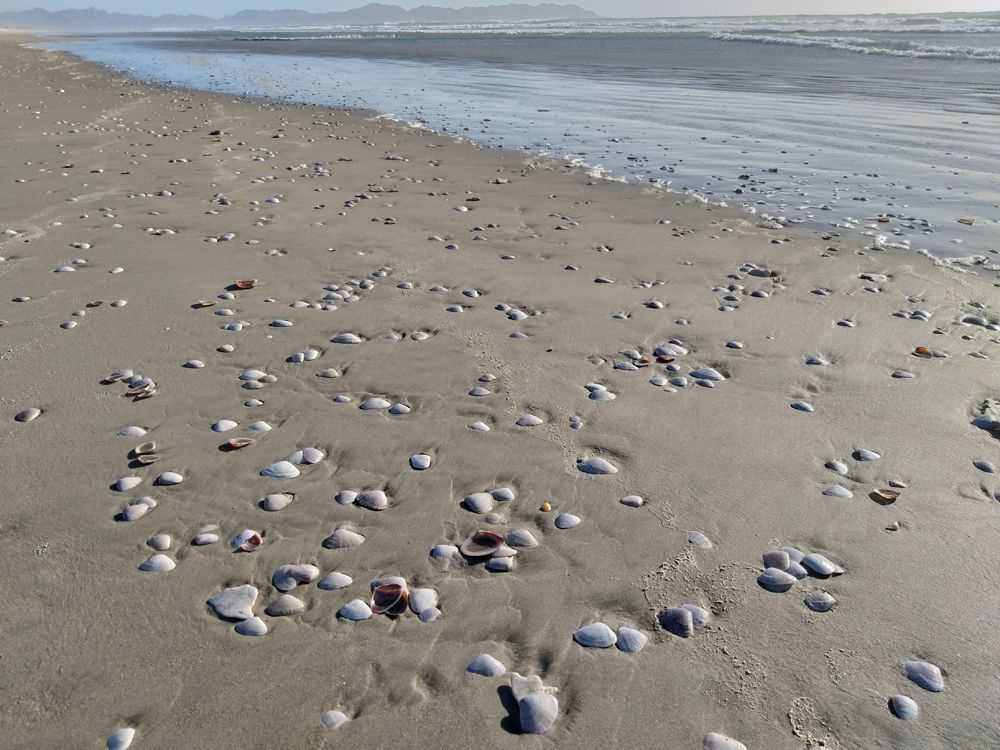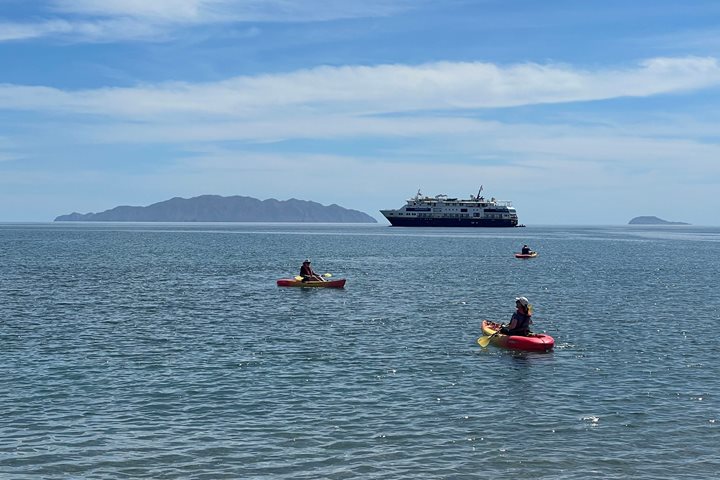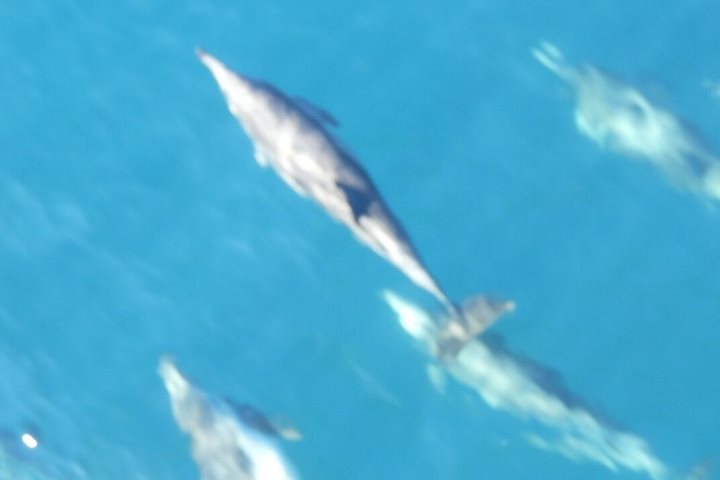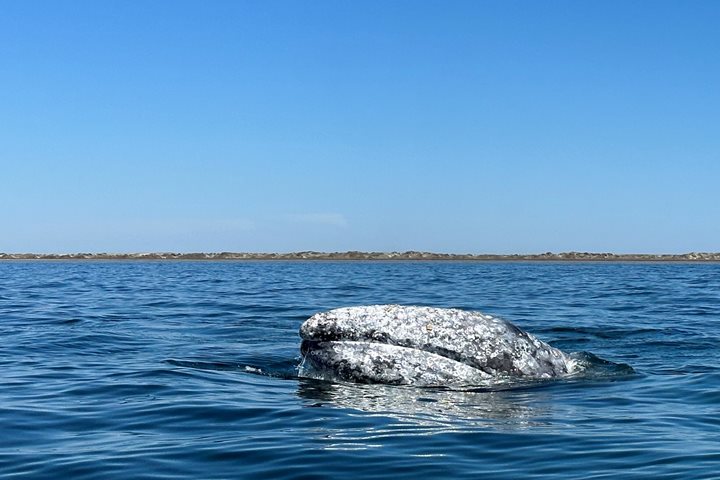Once more, all aboard National Geographic Sea Bird got off on boats with local permit holders for the last whale watching activities of our voyage. In windy yet sunny morning conditions, our parties explored Los Titeres, a part of the Canal de la Soledad, and found some gray whales breaching. They were mostly single, young-adult individuals that were probably looking for mates. They traveled fast and didn’t seem to care about the weather conditions. After taking our last photographs of the magnificent whales, we returned to the ship, picked up anchor, and navigated south.
We heard a lecture on “the other Mexico” and learned about the history of the peninsula, especially of the Californios—the original inhabitants of this rugged territory. All along the Canal de la Soledad were hundreds of birds—pelicans, cormorants, terns, frigatebirds, and others—skimming the air, looking for feeding and perching areas. Permanent shore guardian-like mangroves flanked the green, nutrient-rich waters of the canal. Pangas full of precious seafood cargo showed here and there. Bright, hot, beautiful horseshoe-shaped sand dunes of Magdalena Island were the long-lasting companions throughout the navigation.
In the afternoon, a naturalist talked about the feeding strategies of diverse birds that thrive in this area. Then we disembarked to walk along the narrowest part of Magdalena Island to Sand Dollar Beach on the Pacific side. On the dunes and on the beach, guests and naturalists discovered an abundance of life—salt-tolerant plants, weeds, and bushes with creamy yellow, purple, and orange flowers, and thousands of tivela shells. The wind never stopped but it allowed us to see the fantastic patterns it created on the sand dunes.







